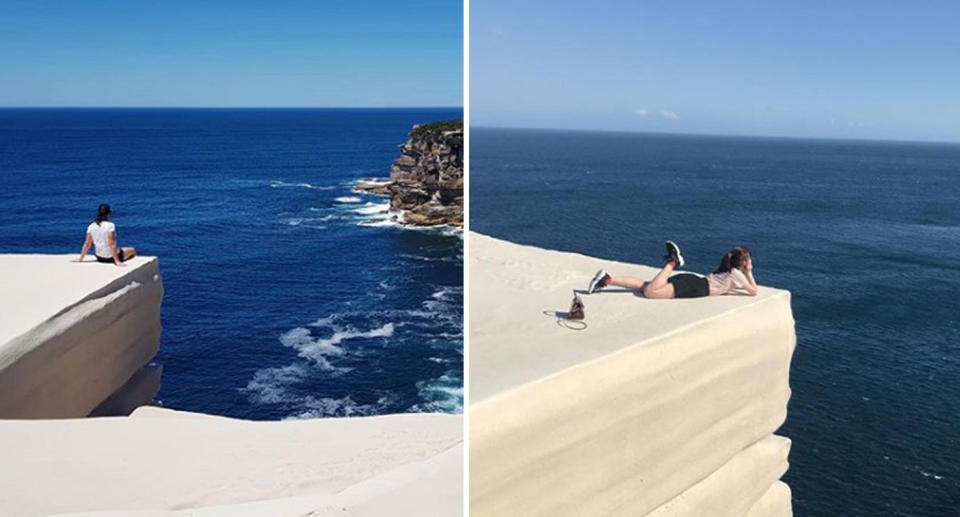New fence plan to stop tourist selfies at iconic cliff
It’s one of the must see tourist spots for social media obsessives looking for that perfect shot.
Wedding Cake Rock in the Royal National Park south of Sydney attracts thousands of visitors each year, with the majority looking to get a snap either of or on the idyllic cliff face.
But with safety warnings over its precarious position constantly ignored, NSW National Parks and Wildlife Service are having to take action to ensure risk takers don’t contribute to the growing number of deaths at the park.
NPWS has revealed it will now look to erect a new fence around the attraction after their previous 1.6m barrier failed to deter a handful of visitors.

“Unfortunately, there is a small minority of people who are choosing to disobey the warning signs and blatantly scale the 1.6 metre-high fence, usually for one purpose only, to take a photograph on Wedding Cake Rock,” a NPWS spokesperson told Yahoo News.
A 2015 geotechnical survey conducted by NPWS using a drone discovered Wedding Cake Rock is extremely unstable and could collapse at any time within the next 10 years.
A post shared by Sean Baik (@tunaloverrr) on Dec 8, 2018 at 9:21pm PST
The sharp-edged, white rock gained its name due to its likeness to a slice of cake, and its rare beauty means visitors more than willing to hike the two hour return journey from Bundeena to the phenomenon.
And while the NPWS has done “a lot of work” to provide appropriate signage to warn that it is “dangerously unstable”, thousands of images on social media prove the warnings are ignored on a daily basis.
Even punishments such as $300 on the spot fines and which are regularly issued by rangers and maximum fines of $3300 appear to be failing in getting the message across.
A post shared by 심다솔 (@ds_890610) on Nov 11, 2018 at 8:44pm PST

Worryingly, many tourists share images of themselves sat on the attraction’s edge with their legs dangling off after breaching the barrier.
While the new fence, which will be installed next year, will remain at about 1.6 metres, it will involve “more robust materials” and made more difficult to climb.
The NWPS spokesperson urged for visitors to obey the safety warnings and to take the matter seriously.
A post shared by Faris PHar Yothasamuth (@phar314) on Nov 4, 2018 at 12:42am PDT
“We are calling on people to think about the consequences of their actions, the impact an accident would have on themselves, their family and friends and the emergency services people who put their lives at risk to undertake dangerous cliff rescues and retrievals,” they said.
Just last year a woman heading to Wedding Cake Rock along the coastal trail fell to her death.
Shazia Edah-Tally, 19, was discovered at the bottom of a nearby cliff.
NWPS’ concerns over the power social media has over people’s risk taking will only have been worsened by a series of deaths worldwide involving selfies and cliff faces.
Park rangers recovered the bodies of 29-year-old Vishnu Viswanath and 30-year-old Meenakshi Moorthy at California’s Yosemite National Park, after they fell to their deaths while taking a selfie from a popular cliff ledge in October.
And earlier this month, South African Jolandi Le Roux died when she fell jumping for a photo at a lookout in Cape Town. She had gone beyond a safety barrier that warned of the dangers below.
